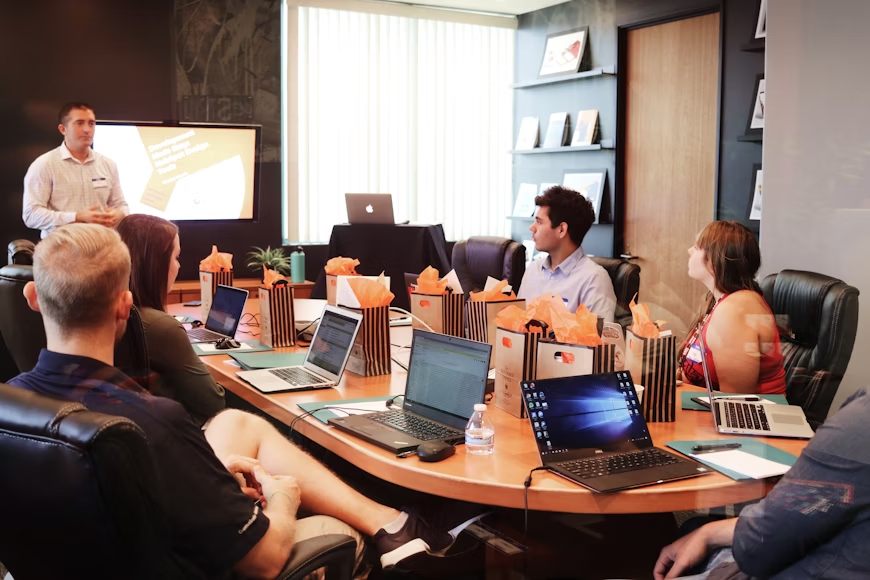Introduction
It’s 2025 — and artificial intelligence isn’t science fiction anymore. It’s in your phone, your search results, your spreadsheets, your music recommendations, even your job applications. But more than a technological shift, AI has become the most powerful economic force since the invention of the internet. The global AI market surpassed $300 billion in 2024 and is projected to hit $1 trillion before the end of the decade, according to McKinsey and PwC reports. Every major industry — from finance to healthcare to media — is being rewritten in code and computation.
For those paying attention, this isn’t just a revolution in tools. It’s a new wealth cycle. Just as the .com boom of the 1990s minted a generation of internet millionaires, the AI boom of the 2020s is minting a new class of creators, founders, and investors — the ones who understand that artificial intelligence isn’t replacing humans; it’s amplifying them. This article explores how we got here, what’s happening now, and how you can ride the wave instead of being drowned by it.
From Algorithms to Empires: A Short History of the AI Boom (2010–2025)
The seeds of the AI era were planted more than a decade ago. Between 2010 and 2015, breakthroughs in machine learning — particularly deep learning — started to outpace expectations. The release of Google’s TensorFlow in 2015 and PyTorch in 2016 democratized AI development. Startups no longer needed million-dollar labs to experiment; they needed a laptop and data.
By the late 2010s, cloud computing (AWS, Azure, Google Cloud) made large-scale training accessible. Nvidia’s GPUs became the new gold rush picks and shovels, powering every major AI model. Then came the turning point: OpenAI’s GPT-3 (2020) and ChatGPT (2022). For the first time, AI wasn’t just for coders or researchers — it was conversational, creative, and humanlike. That opened floodgates for entrepreneurs, investors, and everyday workers to build on top of AI systems.
From 2022 to 2025, AI adoption accelerated faster than any technology in history. Businesses realized they could automate operations, create new revenue streams, and personalize products at scale. The result? A surge in productivity — and a new wave of personal fortunes being built in real time.
The AI Gold Rush: Why This Era Mirrors the .Com Boom
In the late 1990s, anyone who could write basic HTML and understand online communities could raise millions in venture capital. Some crashed, some became billion-dollar companies. The same dynamic is back — but with far more powerful tools. In 2025, anyone who understands how to apply AI can build scalable, automated systems that would have required entire teams in 2010.
Consider this parallel:
- 1995–2005: The .com boom. Internet access, websites, and e-commerce created a digital economy.
- 2015–2025: The AI boom. Machine learning, automation, and generative models are creating an intelligent economy.
In both cases, early adopters who understood the platform shift built empires. The internet lowered the cost of distribution; AI is lowering the cost of creation. You no longer need a large workforce to build valuable products — you need an intelligent workflow powered by machines.
Where the Money Flows: AI Wealth in 2025
Let’s look at where AI is creating value — and who’s benefiting most right now.
- Infrastructure: Nvidia, AMD, and Intel lead the hardware race. Nvidia’s valuation passed $2 trillion in early 2025, driven by demand for GPUs powering data centers and AI training. These are the ‘picks and shovels’ of the AI gold rush.
- Models & Platforms: OpenAI, Anthropic, xAI (Elon Musk’s Grok), Google DeepMind, and Meta lead foundation model development. Their APIs are becoming the new cloud services — tools others build upon.
- Applications: Startups like Notion, Runway, Perplexity, and Jasper AI are turning AI into user-friendly tools. Thousands of micro-startups are emerging, often founded by solo developers leveraging API integrations.
- Consulting & Integration: Traditional companies need help adapting AI. This has created a booming market for consultants, educators, and developers who bridge the gap between code and business.
The wealth isn’t confined to Silicon Valley. It’s global. Founders in India, Africa, and Latin America are building AI solutions tailored to local problems — from agricultural analytics to education tech. For the first time, AI wealth creation is borderless.
How Ordinary People Can Benefit from the AI Boom
AI is no longer something you watch on the news. It’s a tool anyone can use — and profit from — if they approach it strategically. Here are six practical ways to build income and long-term value in the AI era.
1. Build AI-Enhanced Skills
The most immediate opportunity is to use AI to become faster, smarter, and more efficient at your current work. Whether you’re a writer, designer, marketer, or teacher, AI can help you automate routine tasks. Tools like ChatGPT, Claude, and Perplexity can research, summarize, and generate drafts in seconds. The key is not to compete with AI — it’s to collaborate with it.
Example: A copywriter who learns prompt engineering can produce 10x the output and charge premium rates for AI-optimized content strategies.
2. Create AI Tools and Microservices
In 1999, a developer could build a simple web app and sell it for millions. In 2025, solo builders can do the same with AI automations. Using APIs like OpenAI, Hugging Face, or Replicate, developers are creating niche apps — AI resume reviewers, automated research assistants, voice clone studios — and monetizing them via subscriptions or API access.
Tip: You don’t need to code from scratch. Platforms like Replit, Bubble, and Zapier now integrate directly with AI models, letting non-coders build scalable tools.
3. Sell AI Education or Consulting
Every company wants to use AI, but few know how. If you can teach, train, or implement these tools, you can charge premium consulting rates. From corporate workshops to YouTube tutorials, education is the most underrated AI business of 2025.
Example: An HR professional can create a course on ‘AI for Recruiting’ or offer services helping firms automate candidate screening.
4. Invest in the Ecosystem
Not everyone needs to build AI — some can profit by investing in it. The most obvious route is stocks: Nvidia, Microsoft, Alphabet, and Amazon dominate AI infrastructure and services. For smaller investors, ETFs focused on robotics and AI provide diversified exposure. For higher-risk players, backing early-stage AI startups or purchasing fractional equity via crowdfunding platforms can yield massive returns.
Reality check: Like the .com boom, not all AI companies will survive. Diversify — and focus on the ones solving real problems.
5. Build Content Around AI
AI literacy is the new gold. Thousands of creators on YouTube, TikTok, and Substack are building followings by explaining AI tools, reviewing products, and sharing case studies. These audiences monetize through sponsorships, affiliate links, and premium content.
Tip: You don’t need to be an expert — you just need to learn publicly. People follow relatable learners more than polished professors.
6. Automate Your Own Business
If you already run a small business — ecommerce, freelancing, marketing, or even a local service — you can integrate AI to reduce costs and scale faster. Use AI for content generation, customer support, inventory management, or ad optimization. Each minute saved compounds over time.
Example: A Shopify seller using AI-generated ad copy and dynamic pricing can outperform competitors still managing manually.
The Risks and Reality Checks
Every boom brings its bubbles. AI is no exception. Overhyped startups, fake ‘AI gurus,’ and exaggerated claims are everywhere. Be skeptical of any scheme promising overnight riches or '100% passive AI income.' The sustainable path lies in leveraging real tools for real value.
There’s also the ethical and social angle. Automation threatens millions of jobs, from data entry to media production. The solution isn’t to reject AI, but to reskill faster than automation replaces tasks. Governments and educators will play a vital role here — but individuals must take responsibility for lifelong learning.
The Bigger Picture: The Human Edge
AI can write, draw, and code, but it cannot dream, empathize, or lead. The future belongs to those who combine machine efficiency with human creativity. Soft skills — storytelling, empathy, strategy — are now competitive advantages. In a world of intelligent machines, being deeply human is your best leverage.
As OpenAI’s CEO Sam Altman said in 2024, ‘AI will be the most powerful tool humanity has ever created — and how we use it will define the century.’ The question isn’t whether AI will take your job; it’s whether you’ll use it to multiply your impact.
Conclusion: Building Wealth in the Age of Intelligence
From the .com boom to the AI boom, the pattern is the same: technology reshapes opportunity, and those who adapt early build the next generation of wealth. The difference this time is speed — AI evolves monthly, not yearly. That means timing matters more than ever.
To benefit from the AI boom, focus on three principles:
- Leverage: Use AI to multiply output, not just effort.
- Learning: Stay updated — every few months brings new capabilities.
- Long-term thinking: Don’t chase hype; build systems that deliver sustained value.
Whether you’re an entrepreneur, employee, or investor, the opportunity is the same: to ride the wave intelligently. The AI era is not just about automation; it’s about amplification. Those who learn to work with it will not just survive — they’ll thrive.

